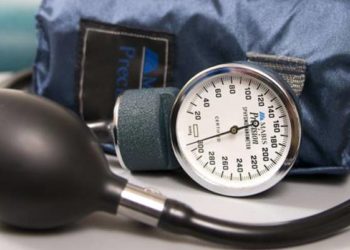A new definition of sepsis
1. Sepsis, now defined as “life threatening organ dysfunction caused by a dysregulated host response to infection,” can be identified by a change of 2 or more points in a patient’s Sequential Organ Failure Assessment (SOFA) score.
2. Among patients with a suspected infection, the quick SOFA (qSOFA) score can be used to screen for those likely to have sepsis; any 2 of the following is considered a positive screen, Glasgow Coma Scale <13, systolic blood pressure <100 mm Hg, and respiratory rate >22/min.
3. Septic shock is now defined as “a subset of sepsis in which particularly profound circulatory, cellular, and metabolic abnormalities are associated with a greater risk of mortality than with sepsis alone.” It can be identified in septic patients with a mean arterial pressure <65 mm Hg, a vasopressor requirement, and a serum lactate >2 mmol/L.
Evidence Rating Level: 2 (Good)
Study Rundown: Sepsis, derived from the Greek word meaning “to make rotten,” is an infectious condition that has been well described through the ages. However, clinicians have struggled in developing useful clinical criteria for identifying sepsis. In 1991, sepsis was first clinically defined in patients with systemic inflammatory response syndrome (SIRS) resulting from an infectious process. However, in the intervening years, several advances have changed the thinking on sepsis. First, the SIRS criteria were found to be poorly sensitive and specific in the identification of sepsis. Second, research into the pathobiology of sepsis has dramatically expanded our understanding of the condition. Thus, the Society of Critical Care Medicine and the European Society of Intensive Care Medicine convened a task force to develop the Third International Consensus Definitions for Sepsis and Septic Shock.
In order to highlight its maladaptive inflammatory response, they have defined sepsis as “life threatening organ dysfunction caused by a dysregulated host response to infection.” Septic patients can be identified by a rise of 2 or more points on the SOFA scale, which is a tally of each individual’s cumulative organ dysfunction, assessed by abnormal functioning of the respiratory (PaO2/FiO2), cardiovascular (MAP and vasopressor requirement), central nervous (Glasgow Coma Scale), hepatic (bilirubin and platelets), and renal systems (creatinine and urine output). Realizing that the SOFA score may be burdensome to calculate, the task force recommended the simpler qSOFA Score for screening patients. Finally, they recommended that septic shock be defined as “a subset of sepsis in which particularly profound circulatory, cellular, and metabolic abnormalities are associated with a greater risk of mortality than with sepsis alone.” The strongest predictors of mortality among septic patients were used to clinically identify septic shock, the combination of vasopressor-unresponsive hypotension and high serum lactate.
This study set definitions for sepsis and septic shock that correlated with different outcomes for patients. However, it makes these definitions knowing that sepsis is a broad and incompletely understood process with no “gold standard” of diagnosis. These new definitions must be analyzed in a prospective fashion to determine their clinical utility.
Click to read the study, published in JAMA
Relevant Reading: Assessment of clinical criteria for sepsis for the third international consensus definitions for sepsis and septic shock
In-Depth [consensus opinion]: Nineteen experts in various fields associated with sepsis were convened to develop a new definition for sepsis and septic shock. In order for their new definitions to reflect the clinical reality of these conditions, the task force analyzed electronic health records from more than 1.3 million encounters in the University of Pittsburgh Medical Center. They found 148 907 patients with likely infections and analyzed their overall rates of ICU admission and mortality. This analysis revealed that a rise of 2 or more points in the SOFA Score outperformed the more cumbersome Logistic Organ Dysfunction System (LODS) and SIRS criteria in predicting mortality (Area under the Receiver Operator Curve (AUROC) of 0.74, 0.75, and 0.64 respectively). Expanding their analysis to include 2 other unrelated data sets, the task force found the optimal combination of clinical factors that identified the patients at greatest risk for mortality, thus setting their definition of septic shock. The combination of hypotension, vasopressor use, and lactate level > 2 mmol/L identified patients with an average mortality of ~40%. The mortality of all patients with sepsis was ~10%, sepsis and hypotension alone was ~20%, and sepsis and hyperlactatemia alone was ~8%.
Image: CC/Wiki
©2016 2 Minute Medicine, Inc. All rights reserved. No works may be reproduced without expressed written consent from 2 Minute Medicine, Inc. Inquire about licensing here. No article should be construed as medical advice and is not intended as such by the authors or by 2 Minute Medicine, Inc.



![Adverse pregnancy outcomes associated with thrombophilias [Classics Series]](https://www.2minutemedicine.com/wp-content/uploads/2015/07/Classics-2-Minute-Medicine-e1436017941513-350x250.png)





